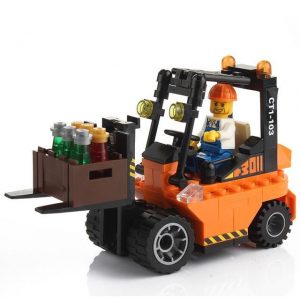
Tip-overs: #1 killer of forklift truck operators
Forklift tip-over was the focus of the UK’s inaugural Forklift Safety Day. And with good reason.
According to the European Agency for Safety and Health at Work (OSHA), tipping accidents are biggest single cause of fatalities (42%) among forklift operators.
Taking these in order… prevention starts with a risk assessment specific to your site, loads, equipment, etc. and creating safe systems of work to eliminate hazards or minimise the risk associated with them.
Many of these can be addressed by removing, re-modelling or reversing routes that require trucks to travel down slopes (especially while laden), eliminating uneven surfaces and keeping ground conditions in good order (so no potholes or debris). It’s also worth talking to your forklift provider to discuss ways to make trucks inherently safer with speed limiters, load sensors, etc.
While we’re on the subject of training, it doesn’t end with operators. The HSE demands that if you supervise materials handling operations you must have the necessary training and knowledge to recognise what good (and bad) practice looks like. The good news is that Managing Forklift Operations courses are now available online to minimise time off site. Contact us if you require further information.
Driving with the mast raised is the single biggest cause of truck-tip events. State-of-the-art software that prevents tipping by seamlessly adjusting the truck’s speed as it enters a turn, taking into account the steer angle and load. The result is reduced risk of tip-overs, less load shedding and improved productivity as the manoeuvre is completed at optimum speed.
Wearing a seatbelt at all times is the simplest and most effective way of avoiding serious injury in a tipping incident. And it’s the law. The HSE makes clear it will “Prosecute site operators who do not take adequate measures to enforce the wearing of seat belts”. The challenge lies in getting operators to comply.
Even where management is vigilant and issues constant reminders, it’s not uncommon for operators to avoid wearing a seat belt (even where there is an interlock), tricking the machine by fastening the seat belt permanently behind them. So what’s to be done?
Some trucks have introduced a “no cheat” seat belt on electric counterbalance trucks. This switchable function allows the employer – at his or her discretion – to select an option that ensures wearing of a seat belt is mandatory.
To enable the truck to drive the forklift, four steps must be followed:
The truck can then be driven normally. If, however, if the sequence has not been completed or if the operator has tried to circumnavigate it, the machine will not function.
Sometimes, the simple stuff can have the greatest impact.
Contact us if you require further information.